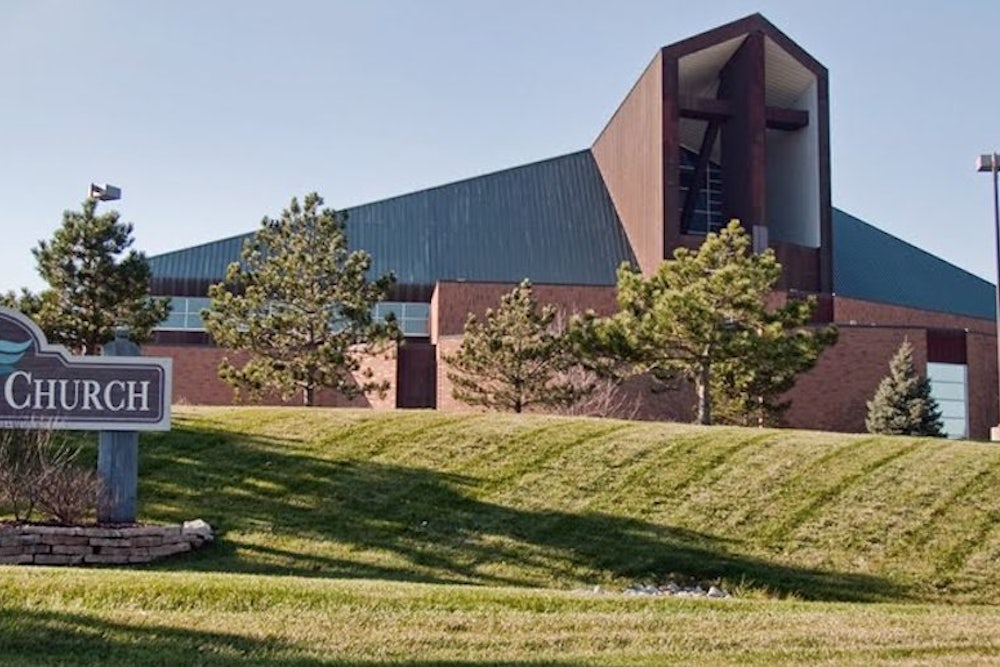The Supreme Court on Monday declined to hear Elmbrook School District v. Doe, letting stand a lower court decision forbidding the use of a church for a public school graduation ceremony in a school district near Milwaukee, Wisconsin. In a somewhat unusual move, Justices Antonin Scalia and Clarence Thomas filed a full-blown written dissent, insisting that the lower court’s ruling relied on logic and precedents rejected only last month in the Supreme Court’s hotly contested approval of legislative prayer. The editorial board of the Milwaukee Journal Sentinel was similarly puzzled. If officially invoking Christ before a legislative session doesn’t violate the Establishment Clause, how can the Constitution possibly prohibit public schools from renting space in churches for purely logistical reasons?
The answer, found in a little-noted aside buried in last month’s decision, has everything to do with the unique ways in which children experience religious pressures and coercion.
In last month’s decision, Town of Greece v. Galloway, Justice Anthony Kennedy’s majority opinion explicitly declined to limit itself to the narrow issue of legislative prayer. Where some had argued that legislative prayer may be a special case, Kennedy insisted that the Court’s jurisprudence “must not be understood as permitting a practice that would amount to a constitutional violation if not for its historical foundation.” Overtly sectarian prayer would be permitted in official state proceedings not as a nod to tradition, but because constitutional principles barred only religious actions that “denigrate, proselytize, or betray an impermissible government purpose.” Observers therefore rightly understood Greece as precedent-setting.
Given this recent context, many assumed the lower courts’ prohibition on the use of church space in Elmbrook was doomed. After all, in Elmbrook there wasn’t even any religious activity in question. Only the use of a room was at issue. There was no call to prayer, no benediction or invocation. Nevertheless, the Seventh Circuit Court of Appeals’ had ruled that “an unacceptable amount of religious endorsement and coercion occurred when the District held important civil ceremonies” in Elmbrook Church. But after Greece, this seemed like a tough case to make. Indeed, Kennedy’s decision in Greece appeared to raise the threshold for “an unacceptable amount” of religion. Observers were left asking: Could the justices possibly consider the use of a room to constitute more “religious endorsement and coercion” than being asked to rise and bow one’s head in prayer?
Yes, apparently. And although the Court doesn’t explain its decisions to deny review, the justices’ reasoning may have to do with the central difference between the two cases: Greece concerned adults, while Elmbrook concerned children.
Adults can be expected to deal with some minor religious discomfort. If you don’t want to stand for the invocation, you can remain seated. If you don’t want to praise Christ, you can remain silent. And as long as judges and legislators treat you no differently because of your religious non-conformity, then theoretically there's no coercion. As Justice Kennedy wrote for the Greece majority, “Offense, however, does not equate to coercion. Adults often encounter speech they find disagreeable; and an Establishment Clause violation is not made out any time a person experiences a sense of affront" [emphasis added].
What’s more, it seems fair to assume a certain degree of sophistication when dealing with adults’ interpretation of their surroundings. “It is presumed,” Kennedy asserted in Greece, “that the reasonable observer … understands that its purposes are to lend gravity to public proceedings and to acknowledge the place religion holds in the lives of many private citizens.” When describing adults, this presumption doesn’t seem too far-fetched. But with children, the calculus about both coercion and impressions of endorsement changes radically. Students don’t really have a “choice” about whether to attend their graduation, and a young child watching his principal speak beneath a giant crucifix cannot be expected to fully parse the symbolism. In previous cases, the Supreme Court, including Justice Kennedy, has recognized the “immense social pressure” that exists in school contexts and, particularly, the “influence and force” of graduation ceremonies. And so the Court has long been particularly wary of the encroachment of religion into public schools.
Indeed, the “involvement of minors” was precisely what the Seventh Circuit chose to emphasize in its decision, repeatedly underscoring that impressionable “high school students and their younger siblings” were at the core of the case. Justice Scalia’s dissent neglects even to address the distinction; he muddies the issue by opening his dissent with a comparison between his own dislike of Stravinsky and the students’ objection to Christian iconography. Elmbrook is about children, and the Court’s decision to deny review reflects a proper recognition of the fundamental differences between children and adults. At the very least, most children have the good taste to appreciate The Firebird.
